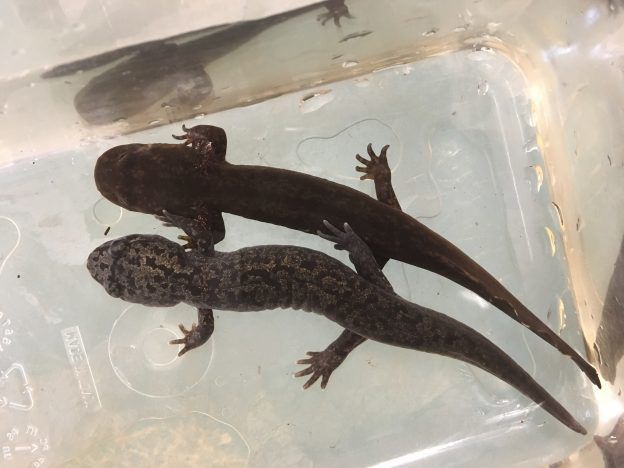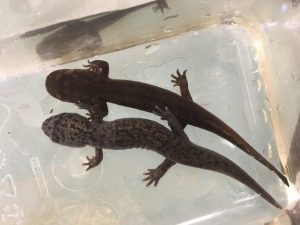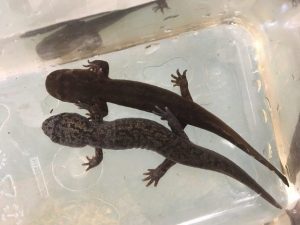Episode 21: Stream ecosystems and a changing climate
November 15, 2018
Examining the effect of climate change on stream ecosystems
As a first year Master’s student in the lab of Ivan Arismendi, Francisco Pickens studies how the changing, warming climate impacts animals inhabiting stream ecosystems. A major component of stream ecosystem health is rainfall. In examining and predicting the effects of climate change on rainfall, it is important to consider not only the amount of rainfall, but also the timing of rainfall. Although a stream may receive a consistent amount of rain, the duration of the rainy season is projected to shrink, leading to higher flows earlier in the year and a shift in the timing of the lowest water depth. Currently, low flow and peak summer temperature are separated by time. With the shortening and early arrival of the rainy season, it is more likely that low flow and peak summer temperature will coincide.
Francisco is trying to determine how the convergence of these two events will impact the animals inhabiting streams. This is an important question because the animals found in streams are ectothermic, meaning that they rely on their surrounding environment to regulate their body temperature. Synchronization of the peak summer temperature with the lowest level of water flow could raise the temperature of the water, profoundly impacting the physiology of the animals living in these streams.
How to study animals in stream ecosystems?
Using a simulated stream environment in a controlled lab setting, Francisco studies how temperature and low water depth impact the physiology and behavior of two abundant stream species – cutthroat trout and the pacific giant salamander. Francisco controls the water temperature and depth, with depth serving as a proxy for stream water level.
Blood glucose level serves as the experimental readout for assessing physiological stress because elevated blood glucose is an indicator of stress. Francisco also studies the animals’ behavior in response to changing conditions. Increased speed, distance traveled, and aggressiveness are all indicators of stress. Francisco analyzes their behavior by tracking their movement through video. Manual frame-by-frame video analysis is time consuming for a single researcher, but lends itself well to automation by computer. Francisco is in the process of implementing a computer vision-based tool to track the animals’ movement automatically.
Why OSU?
Originally from a small town in Washington state, Francisco grew up in a logging community near the woods. He knew he wanted to pursue a career involving wild animals and fishing, with the opportunity to work outside. Francisco came to OSU’s Department of Fisheries and Wildlife for his undergraduate studies. As an undergrad, Francisco had the opportunity to explore research through the NSF REU program while working on a project related to algae in the lab of Brooke Penaluna. After he finishes his Master’s degree at OSU, Francisco would like to continue working as a data scientist in a federal or state agency.




